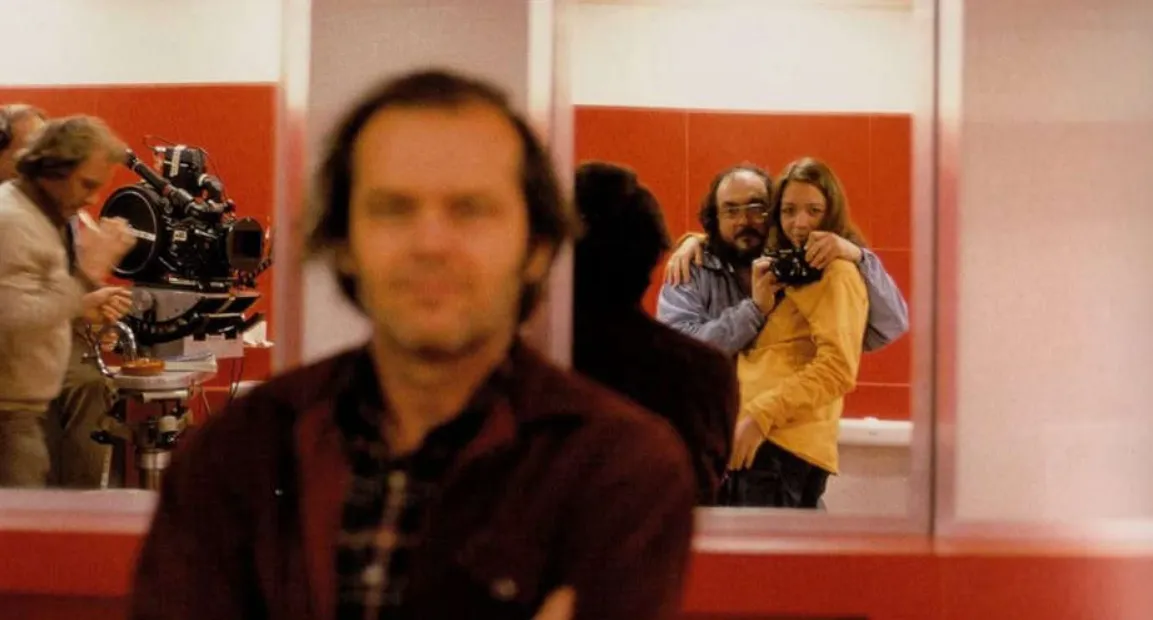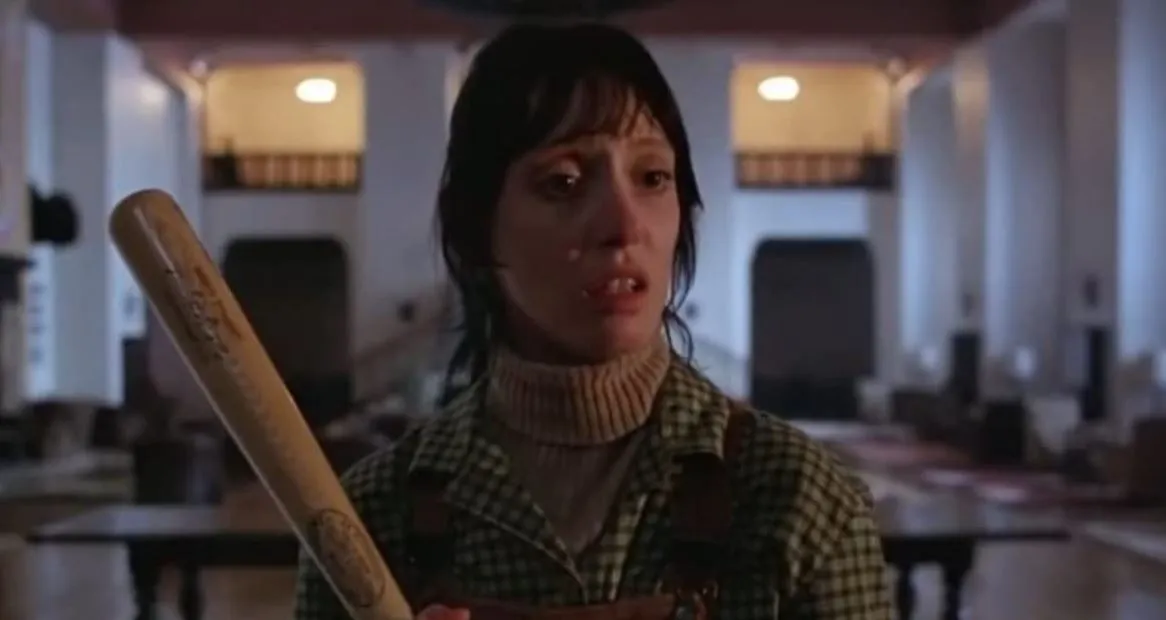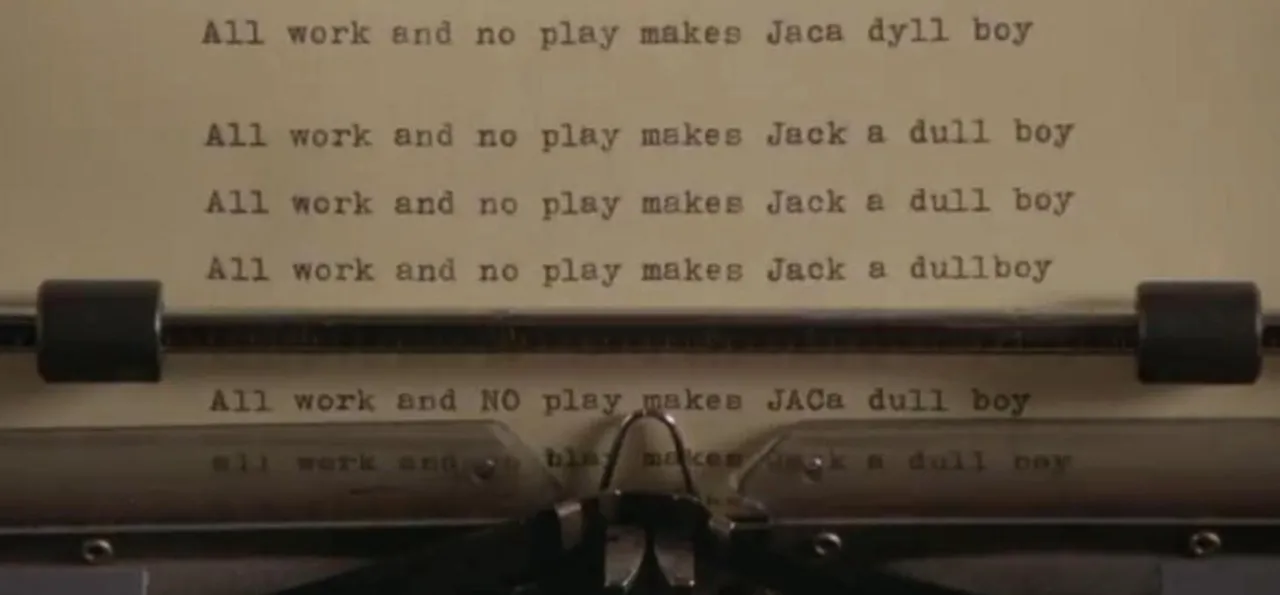In this series, I will be taking an in-depth look into Stanley Kubrick’s 1980 horror masterpiece “The Shining”. I will be exploring the key differences between Kubrick’s film and the novel by Stephen King in this first part of my investigation. I plan on analyzing certain shots and key scenes which I have only just noticed interesting details. I will also put forward my own theory about what Kubrick was trying to bring the public’s attention to by using “The Shining” as his mouthpiece.
Stanley Kubrick’s film’s often share striking similarities with each other even if they may be set in completely different centuries or realities. His films often explore the duality of man. “A Clockwork Orange” breaks down the 'duelling' nature of the violent man and the obedient slave. “Lolita” looks at the lustful predator versus the law abiding citizen (a wolf in sheep’s clothing). “Full Metal Jacket '' discusses the dual nature of the war machine versus the peacemaker. In all of Kubrick’s films we can see this ‘duel’ of the ‘dual’. His films focus on the battle between good versus evil, light versus dark. And, it is perhaps “The Shining '' where we can see this theme so evidently clear.
Whilst all of Kubrick’s films have a horror element to them ( e.g. the collapse of civilization and threat of nuclear war in “Dr. Strangelove”, the horror of paedophilia in “Lolita”, the brutality of war in “Paths of Glory”), “The Shining” is his only film that can be properly defined as belonging to the genre. Whilst Kubrick’s films up until “The Shining” all shared some sort of ‘fantasy’ elements to them, they were all steeped in a sense of realism (even if they may have been set in a dystopian future or in the ancient past). The paranormal/supernatural world of “The Shining” is a major shift from this sense of realism that Kubrick had interwoven into so many of his films.

Kubrick’s art was adapting stories that people couldn’t ever foresee as films due to their controversial themes (for example “Lolita” which tells the ‘love’ story of a paedophile) or their grand scale (such as “2001: A Space Odyssey”). In a way, Stephen King’s “The Shining” shares this similarity. It is extremely difficult to tell a convincing ghost story, and it’s even more difficult to adapt it for the big screen. It’s easier to make an audience laugh than it is to make them scared. The best horror builds on suspension and tension, creating a slow and steady build up in order to stoke up a sense of dread, before revealing the ‘scare’.
King’s work is very effective in how it often places the reader directly in the head of the protagonist who is experiencing the supernatural horror. King also manages to play on our fears of the ‘ordinary’ using settings which are familiar to all in order to create the world where the ‘horror’ exists. Ordinary places such as hospitals, hotels and sewers become places where the ‘monster’ lives. Ordinary items such as a red balloon, a Cadillac, or even a dog become tools to terrorize not only the characters which inhabit these worlds but also the reader. It’s no wonder that King is often referred to as the ‘master of horror’.
Kubrick was another master of his craft and apparently had wanted to film a horror film for a while. He even confessed his interest in “ESP and the paranormal” to Michel Ciment. When he received the manuscript for “The Shining'' from John Calley, of Warner Bros, he became interested in bringing the story to the big screen, as he found that the plot worked very well and that was something he considered to be a necessary component of a film. In an interview with Ciment, Kubrick states that he “thought it [The Shining] was one of the most ingenious and exciting stories of the genre I had read. It seemed to strike an extraordinary balance between the psychological and the supernatural.”

After completing “Barry Lyndon” Kubrick spent a lot of time reading, perhaps in an attempt to recover after the long tiring production of “Lyndon” where the principal photography had lasted 300 days, from spring 1973 through to early 1974. Kubrick was on the hunt to find something that he could morph into his own piece of work but he had to discover the material by ‘accident’. In his own words, “I try to avoid any systematic approach to reading, pursuing instead a random method, one which depends as much on luck and accident as on design.” This is how he came across King’s “The Shining”- a simple accident.
Although there were aspects of the book that Kubrick admired and enjoyed, he wasn’t too impressed with how the novel ended. He found the ending a little too neatly resolved. As he stated in his interview with Ciment, “To be honest, the end of the book seemed a bit hackneyed to me and not very interesting. I wanted an ending which the audience could not anticipate”. As much as Kubrick had found the book fascinating, he found King’s prose to be sloppy and believed that the writer had rushed his work.
Kubrick wasn’t too impressed with the characterisation of the key players in “The Shining” and I can understand his point regarding the likes of Wendy (played by Shelley Duvall in the 1980 picture). In the novel Wendy feels a little too ‘perfect’ she is described as being blonde and very beautiful, miles out of Jack Torrance’s league. When reading the book, I found the character of Wendy to be less developed than Jack. She has a backstory in regards to an abusive mother and is haunted by the death of her younger sister. However, she’s never seen as being ‘hysterical’ or abused in the same way as Duvall’s character is presented to us in the film.

In the film, we can see the years of emotional neglect and mental abuse that exists between Wendy and Jack. There’s no love or affection that exists between them. In the book there’s a sex scene that takes place between the pair, and Wendy is still strongly attracted to Jack despite her concerns about his mental state. Kubrick managed to do what King couldn’t- he managed to capture the horror of a loveless marriage.
Unlike King’s novel, Kubrick’s film only hints about Jack’s troubled past. According to an article by Screen Rant, “Kubrick thought King's extensive delving into his character's backstories and past issues were unnecessary to conveying the main story.” In a novel you have more time and space to develop a character’s history, but the structure of a film differs dramatically. Kubrick wanted the viewer to gain some insight into Jack’s mental state but he was more concerned with planting the seeds and letting the viewer reach their conclusions, rather than spelling it out in its entirety.

It is perhaps this reason that King disliked the film so much. As he stated, “I think ‘The Shining’ is a beautiful film and it looks terrific and as I’ve said before, it’s like a big, beautiful Cadillac with no engine inside it.” His issues were mostly with how the character of Jack seemed to have no arc in the film, whereas in the novel there was a ‘redemption’ of the character at the end. Unlike King, Kubrick wasn’t interested in stories of redemption. He saw the world in all of its shades of gray. Perhaps, Kubrick knew that in the real world, monsters get away with their crimes and they never even attempt to seek redemption?
In my next chapter of this series, I will be discussing some key shots which I hadn’t come across before and breaking down possible explanations as to why Kubrick decided to incorporate certain imagery into the film. Then things are going to get even wilder…I do hope you’ll join me deeper into the maze of “The Shining”.
All photos come from IMDb.
Please note the sources used below:
https://screenrant.com/shining-movie-stanley-kubrick-stephen-king-changes-explained/
https://www.nightmaretoys.com/2022/02/18/horror-is-the-best-genre-and-heres-why/
http://genius.cat-v.org/stanley-kubrick/interviews/ciment/the-shining
https://www2.bfi.org.uk/news/producing-shining-jan-harlan-kubrick
https://faroutmagazine.co.uk/reason-why-stephen-king-hated-stanley-kubrick-film-the-shining/